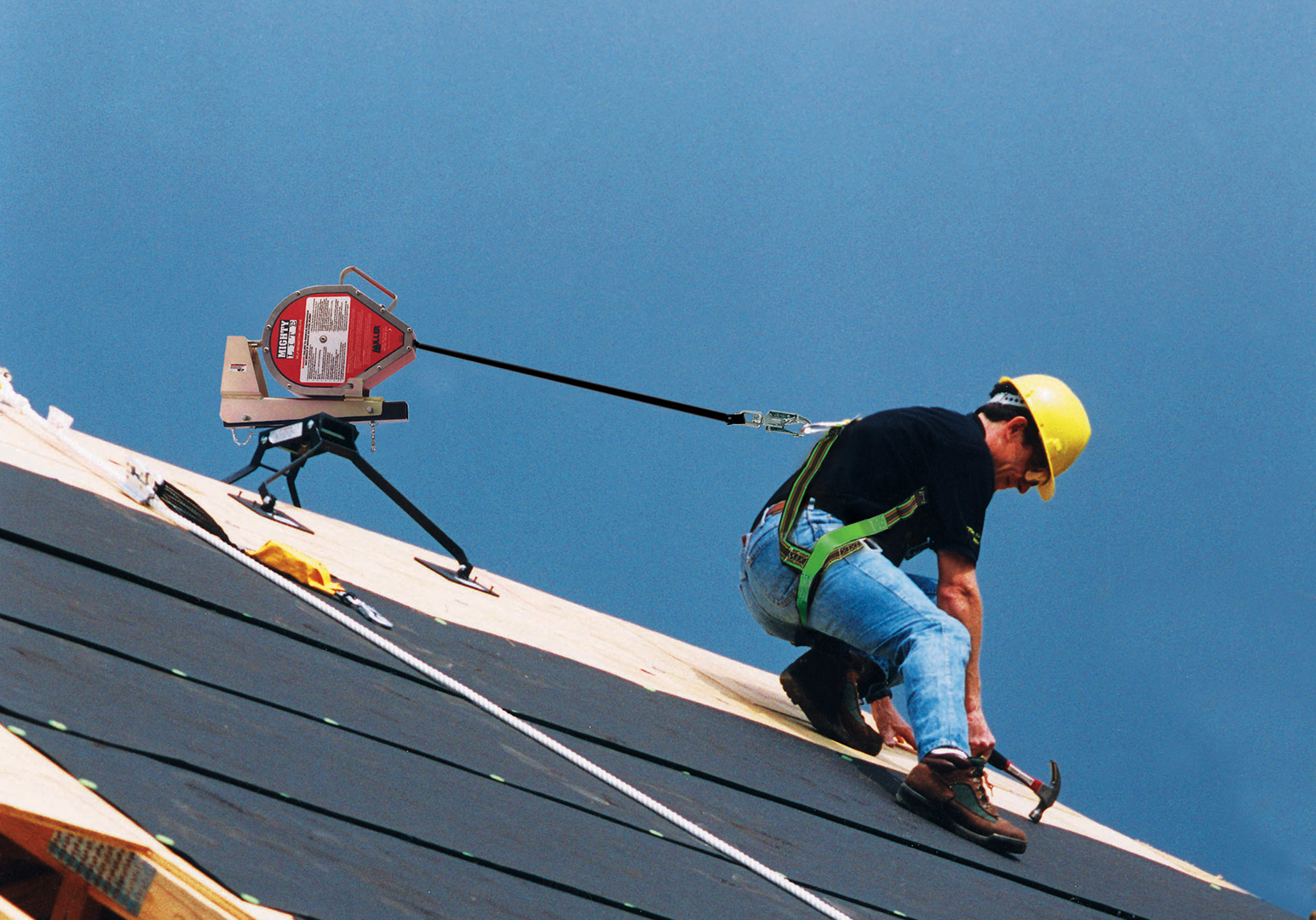Re-roofing exposes workers to the hazards of demolition work at heights. With the proper fall protection, the risk of serious falls can be substantially reduced. The next two blog posts will highlight information from OSHA to point out some of the hazards workers encounter during re-roofing and will list some practical methods employers can use to protect workers who replace roofs. Please remember that employers are responsible for ensuring compliance with applicable OSHA requirements.
Risks During Re-Roofing
Workers replacing roofs risk permanent injury or death from falls while they demolish old roofs and install new roofing material (for example, shingles, tiles, or slate). Even experienced roofers are exposed to unpredictable fall hazards caused by uneven sheathing, sudden gusts of wind, loose roofing materials, and surfaces that become slick when wet. Taking appropriate fall protection measures reduces risks and saves lives.
The employer must provide a training program for each worker who might be exposed to fall hazards. The program must enable each worker to recognize the hazards of falling and train each worker in the procedures to follow to minimize these hazards.
More than one-third of fall deaths in residential construction are caused by falls from roofs.
Safe Roofing Practices: Important Steps
Before beginning the job, focus on identifying fall protection needs. Survey the roof to determine if there are pre-installed anchorages available that can be used. If not, then plan immediately to identify those systems needed to protect workers from falls and have them in place before the workers report to the job.
Reducing Risks: Determining Structural Integrity
Many workers have been injured when the roofs they were working on collapsed from under them. Employers must determine the structural integrity of the roof and take all necessary precautions to protect the workers before the job begins. If workers notice signs of structural deterioration (for example, dry rot), a competent person should evaluate the area.
Other considerations for a safe construction site:
• Guard against falls through skylights or other roof openings. Use a guardrail system, a personal fall arrest system (PFAS), or a protective cover that will support two times the weight that may be imposed on it at any one time.
• Appropriate footwear is important personal protective equipment on any construction site, but it is critical during roof demolition. A nail or shingle-removal tool injury can cause a worker to lose concentration and fall.
• Workers should be careful of air hoses and power cords for nail guns and other electrical equipment. If a worker steps on one, hoses and cords can slip underfoot and lead to falls.
Staging Material
Loose material and hand-held equipment can create tripping hazards on the roof surface. To minimize exposure to fall hazards, employers can stage materials so that workers on the roof have quick and safe access to them. While handling material on the roof, the worker should hold the material on the side of his or her body that faces the down-sloped edge to prevent being struck by the materials if they are dropped. Material can also be staged so it cannot slide off the roof edge and potentially strike a worker on the ground. Slide guards can help to keep material from sliding off the roof. Establishing a restricted area around the perimeter of the project can also keep workers out of the danger zone where debris, tools or materials may fall to the ground. The area should be posted with signs that warn of the potential hazard.
Coming up in part 2 we will discuss the specific personal safety systems roofers can use to avoid potential injuries.



